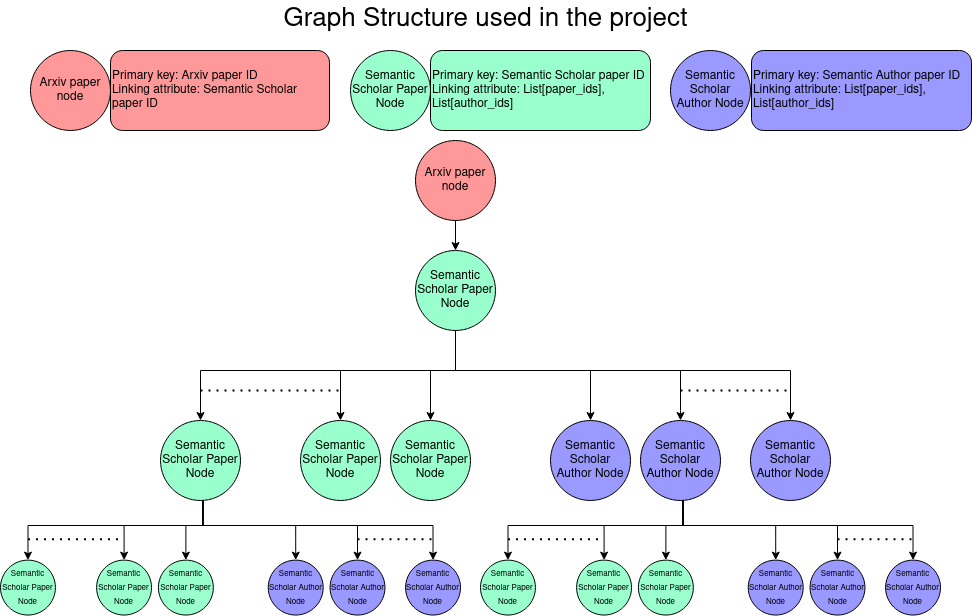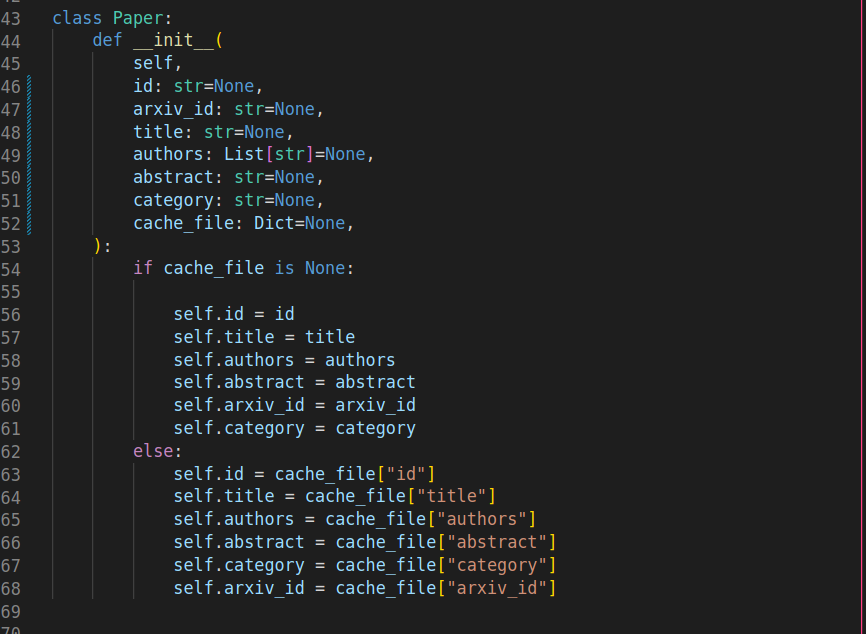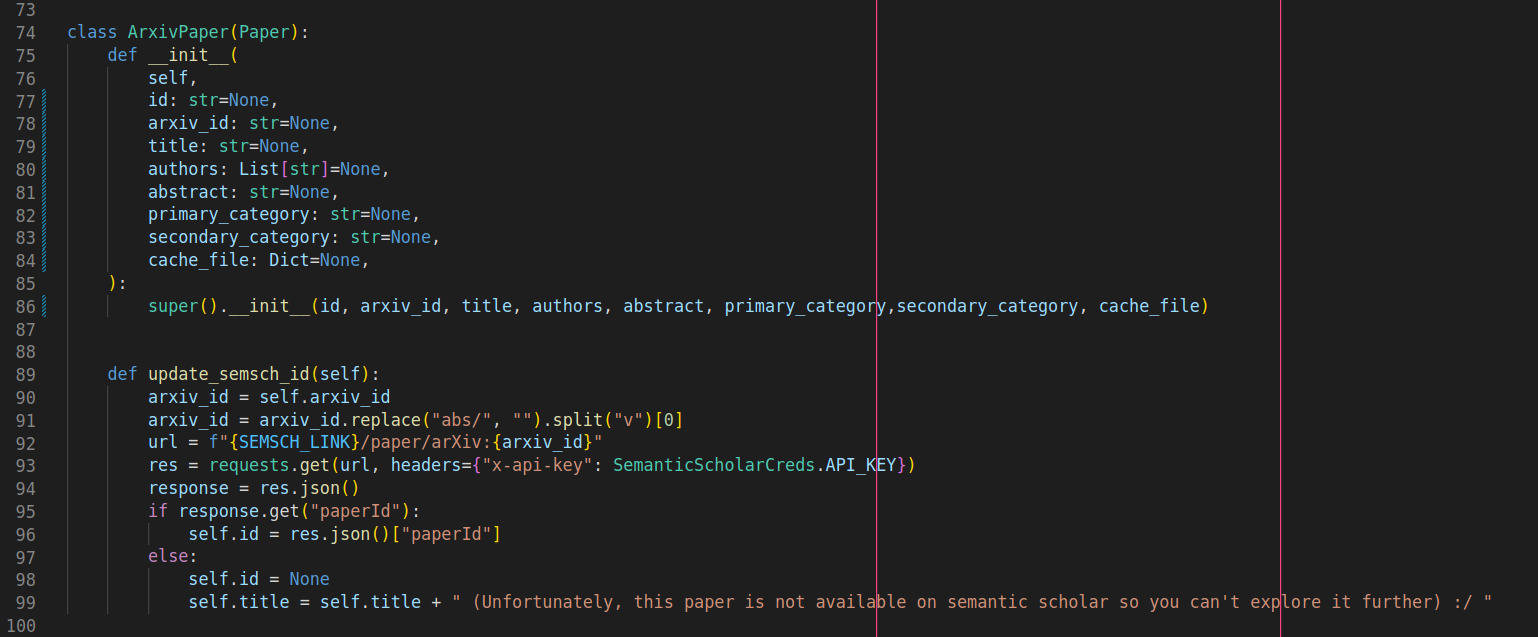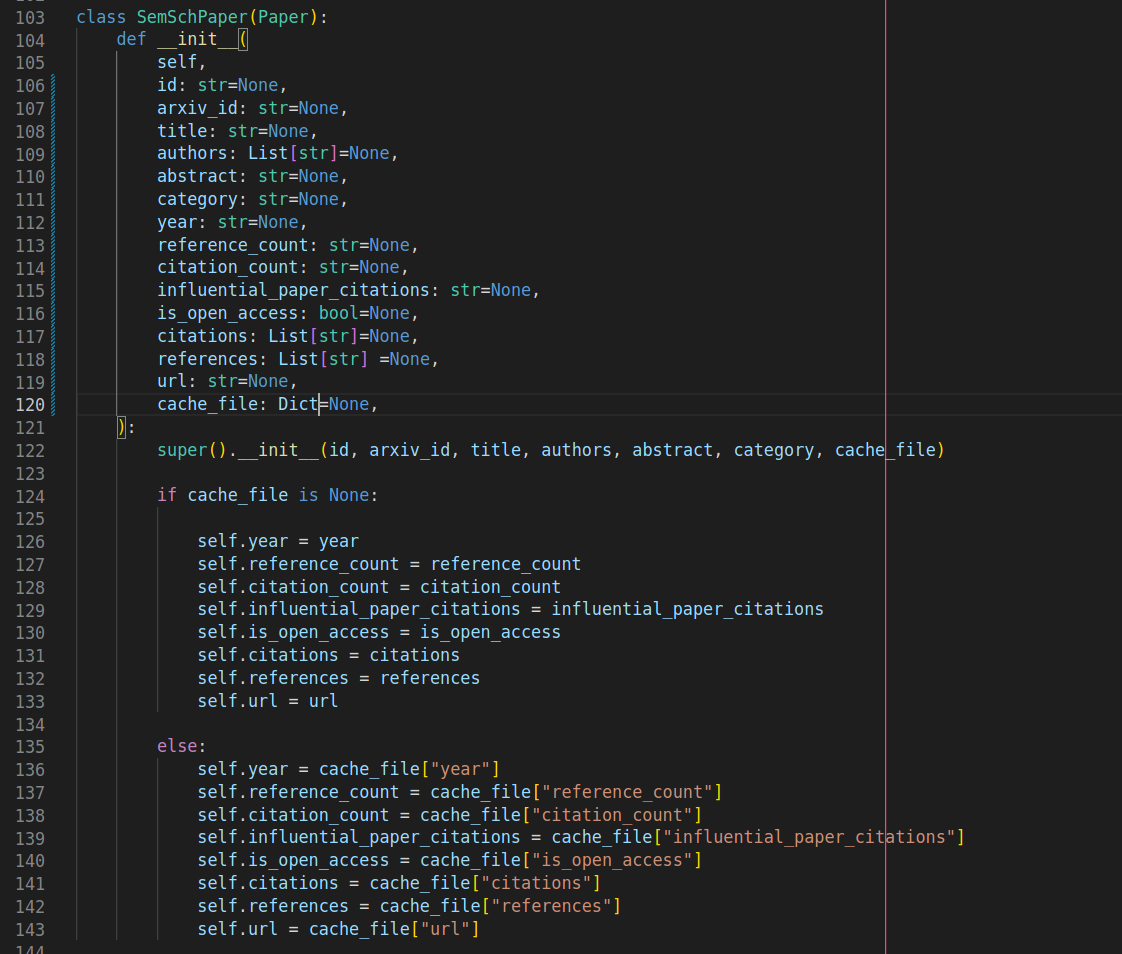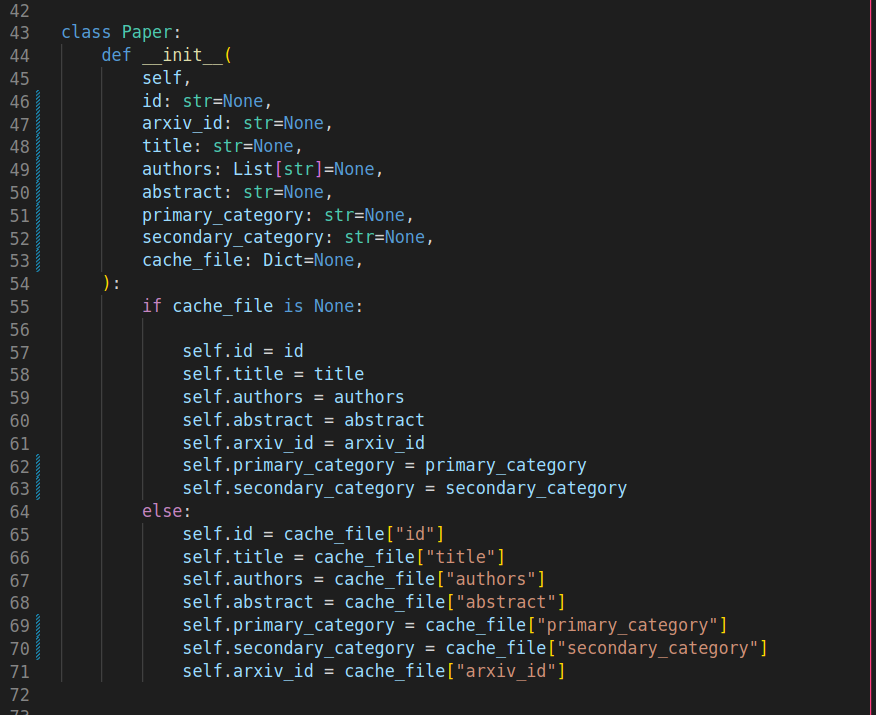The repository contains code for final project of course SI 507 offered during FA 2022 at the University of Michigan, Ann Arbor.
Interface for the applicationAll the required python packages needed for the project are listed inside requirements.txt. You can either use the command pip install -r requirements.txt, or manually install them in your python environment using the following lines:
pip install pandas
pip install Flask==2.2.2
pip install requests
You will require a semantic scholar API key for this application. Please use this form(https://www.semanticscholar.org/product/api#Partner-Form) to request the API key anf insert it inside data/secret_key.py file.
Optionally, you can also download some of the cached papers here.
Once the key is its place run the following commands:
cd src
python app.py
This should switch the Flask server on at http://127.0.0.1:5000.
To read about the Data structure used in the backend, please read this.
The overall data structure used for the application is predominantly inspired from the user's intended use of the application. As mentioned in [UserInrerface.md](./UserInterface.md), we can explore the papers continually in a hierarchial fashion. I have divided the data into a graph-type data structure. Ideally, this graph can have countably infinite nodes. Intuitively, we know that each paper has a list of authors, references, and citations. Each of the authors further has papers and a list of the other authors they worked with. Additionally, each of the papers in citations and references has its authors. This chain of paper-author-paper… is essentially countably infinite, and is the key motivation behind using the graph structure. Using the graph structure enables the user to seamlessly explore any paper-author, paper-paper, or author-paper edges. Based on this, the graph has three types of nodes which are predominantly derived from the way in which the user experience happens for the project(as mentioned briefly above). There are predominantly 3 nodes for the graph. Each of the nodes has been implemented using Python class. The figure shows the overview of the Grpah structure
Figure showing the graph data structure usedThe main purpose of this class is to store the results of Arxiv papers. The results from Arxiv API are stored as the attributes of this class. Note that I have a general Paper class that is then inherited by both ArxivPaper and SemSchPaper. To make a graph edge between Arxiv class and the Semantic Scholar Paper class as mentioned in Section 2.1, we use the Arxiv paper ID as a query to find the semantic scholar paper ID. While in the cache, we store the results for this class as a separate JSON and only form the graph edges once the data is in the memory. The reason behind not storing the whole graph at once is that the sheer size of this file becomes very big. The class attributes here are :
id: Semantic Scholar paper ID of the Arxiv paperarxiv_id: Arxiv ID of the papertitle: Title of the paperauthors: Authors of the paperabstract: Abstract of the paperprimary_category: Primary Category of the paper as shown by Arxiv API. This can be eithercs,eess,math, oreconand is derived from here- secondary_category: This is the secondary category of the paper and gives more specialized category type. This is derived from here
- cache_file: A cache dictionary containing class attributes
The screenshot for the Paper class definition is below:
The screenshot for ArxivPaper is mentioned below:
This class is the second on the hierarchy of the graph after the Arxiv Paper class. As mentioned in Section 2.2, each Arxiv node has an Arxiv ID that is used to initialize the Paper class. The main purpose of this class is to represent information about a paper fetched from semantic scholar API. Among the attributes of this class, we have a list of authors of the paper, a list of paper references, and a list of citations of the paper. For each list, I just store an index that is then used to get the actual paper or author from the in-memory dictionary during run time. The class attributes here are :
id: Semantic Scholar paper ID of the Arxiv paperarxiv_id: Arxiv ID of the papertitle: Title of the paperauthors: Authors of the paperabstract: Abstract of the paperprimary_category: Primary Category of the paper as shown by Arxiv API. This can be eithercs,eess,math, oreconand is derived from heresecondary_category: This is the secondary category of the paper and gives more specialized category type. This is derived from hereyear: Year in which the paper was publishedreference_count: Number of references of the papercitation_count: Number of citations of the paperinfluential_paper_citations: Number of influential citations of the paperis_open_access: Is the paper open access or notcitations: A list of strings representing the Paper IDs of the citations of the paperreferences: A list of strings representing the Paper IDs of the references of the paperurl: URL of the Papercache_file: A dict having cached info.
The screenshot showing SemSchPaper the class definition is below:
Note that I have inherited the Paper class here which is also used in defining the Arxiv paper class.
The main purpose of this class is to represent author information. Among the attributes of this class is the list of papers of the author and the list of authors that this author has worked with. These lists are used to form the author-author edge and author-paper edge. As mentioned in Section 2.3, the list of authors contains the Author ID which is then used to query the author information from the list of author nodes, each of which is an author class. The class attributes here are :
id: The semantic scholar author IDname: Name of the Authorhomepage: Homepage of the authorpaper_count: Number of papers published by the authorcitations: Number of citaions the author has receivedhindex: H-index of the authorpapers: List of the semantic scholar paper IDs published by the authorsworked_with: List of the semantic scholar Author IDs of the other authors who worked with this authorcache_file: A dict having cached info.
The screenshot for the class definition of the Authors class is shown below.
Using the three nodes mentioned, I then use the file src/generate_object_tree.py to organize it into a tree structure. There are three main classes inside this Python file namely SemSchTree, ArxivTree, AuthorTree that are used for this ogranization. The choice of making three separate Grpahs here was based on the fact that dumping all the data in one file grows the cached file size very quickly. To mitigate that, I store each node separately and use thhe loaded JSON to traverse through the graph structure.
This class loads the tree pertaining to Arxiv papers. It has a read/write cache functions that perform the essential data read/writes every time we request a new set of papers from the Arxiv API. The main controlling function inside this class is gather_data which takes the user input paper_title, author abstract, use_cache, primary_category , and secondary_category and processes them accordingly. Here, the functionailties primary_category and secondary_category only access the cached data and do not request any new papers from the Arxiv API. This function returns a list of papers, papers_data that gets displayed on the user page. Also, this class also calls semantic scholar API to request the semantic scholar paper ID for the corresponding Arxiv Paper ID
This class loads the graph pertaining to Semantic Scholar papers. It has a read/write cache functions that perform the essential data read/writes every time we request a new set of papers from the Semantic Scholar API. The main method of this class is fetch_paper_data that takes is the semantic scholar Paper ID(the output of ArxivTree) and returns all the details pertiaing to the paper. It also has methods like update_papers that forms paper-paper edge of the graph. This function essentially finds out details pertianing to the citations and references of the paper. For each Authors node inside this graph, we onoy store the author_id, citation_count, h-index, and paper_count. The rest of the information like other authors that worked with this author and the papers of each of the author is store inside a separate graph called AuthorTree. It returns all the information of the requested Paper that gets displayed on the Paper Page
This class loads in all the author information for semantic scholar Authors. It has a read/write cache functions that perform the essential data read/writes every time we request a new set of papers from the Semantic Scholar API. The main method of this class is get_author_data which takes two inputs, author_id and a class object of type SemSchTree. This function establishes the essential link between the papers and authors and forms the paper-author edge of the graph. It returns all the information of the requested author that gets displayed on the Author Page

